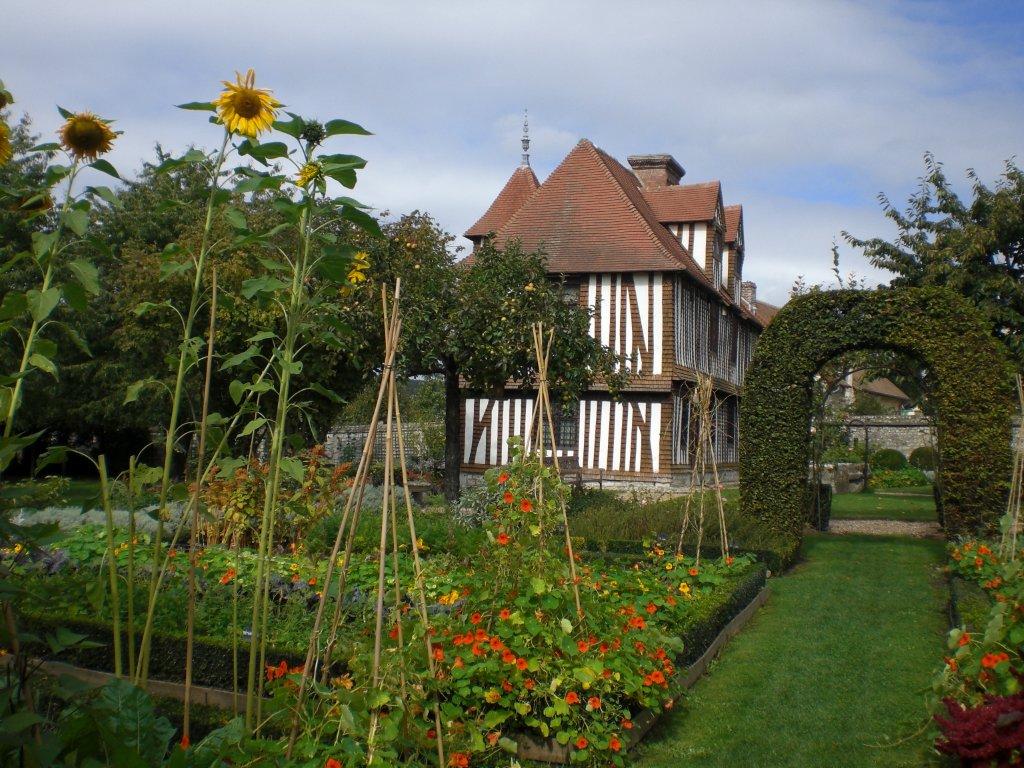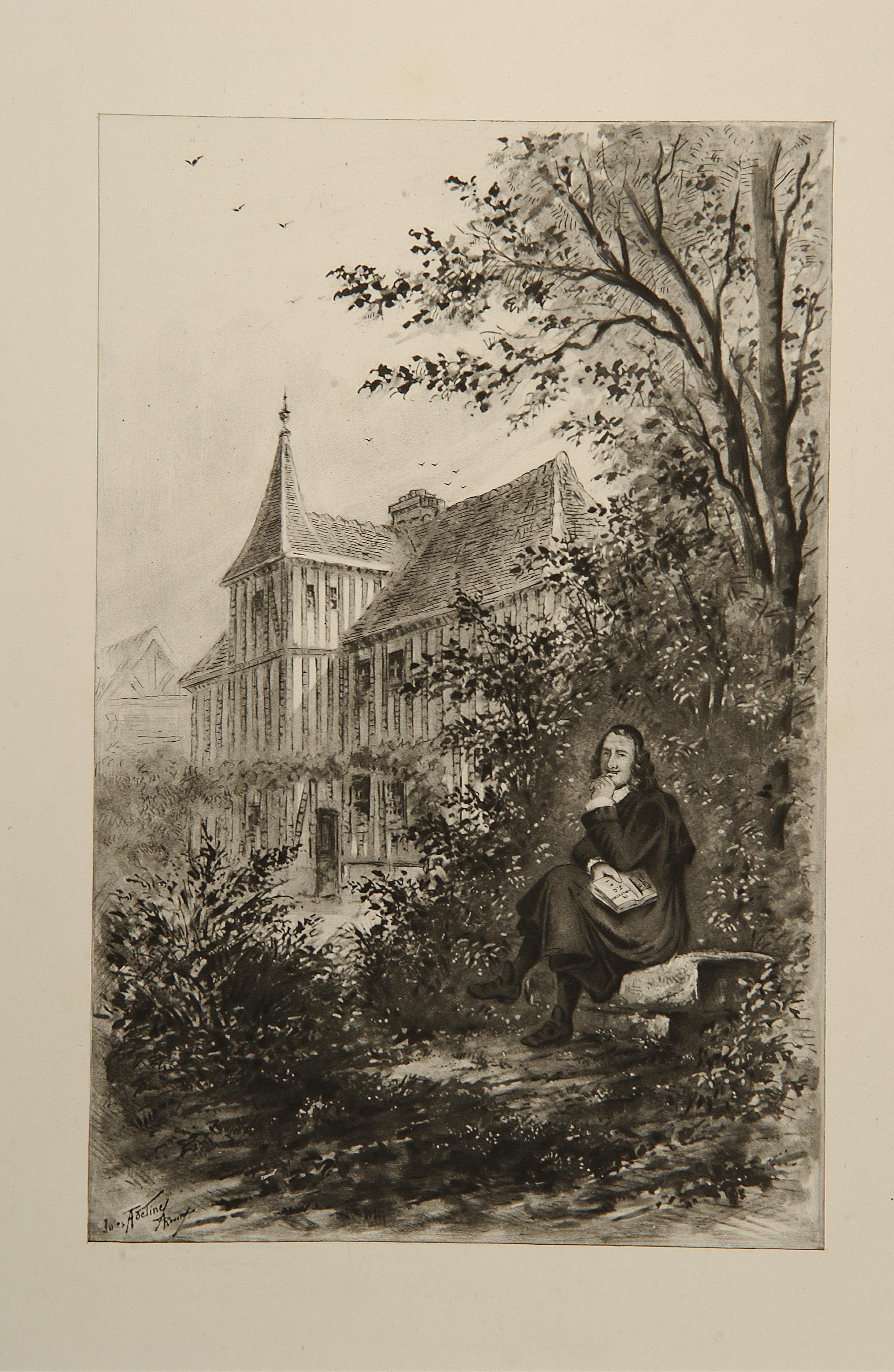Maison des champs, Pierre Corneille

History of the Museum
Upon the death of his father in 1639, Pierre Corneille inherited the “maison manante” (villager house) of Petit-Couronne; by that point, the property had already been in the family for half a century. In fact, it had belonged to his great-great-uncle Pierre Houel, Sieur du Vaudetot, who had written Pierre Houel, Sieur de Valleville and the brother of Corneille’s grandmother, into his will.
In order to get out of a complicated family situation, on 7 June 1608 Pierre Corneille, the father, master of water and forests, acquired:
“A farmstead place and inheritance that includes a villager house, barn, stables and bakery, containing approximately an acre, which is walled in and planted. Located in the Petit-Couronne Parish, this farmstead is also marked out on one side by the Perain Fringot heirs, on the other side by the pond, on one tapered edge by the street, and on the other edge by the gate to this pond.”
In addition, there were 19 plots of land covering a total area of 42 acres and 2 “vergées”, which equates to almost 25 hectares. The deed executed before the tabellion (notary) office of Rouen contained no less than eight pages.
In March 1639, the house belonged to the poet. He lived there, and the fact that his sister Marie, in 1623, and then his daughter Marie, in 1646 and 1648, were godparents to children from the village indicates that they maintained close relationships with the inhabitants.
In 1662, the poet left Rouen to live in Paris. His daughter Marguerite remained in a Dominican convent in the town. In order to form a convent dowry for her when she received the religious habit in 1668, Corneille rented the Petit Couronne property out to a farmer and paid the entire rent of 300 French livres per year to the convent.
It was the poet’s son, also named Pierre, who sold the estate to Jacques Voisin, Sieur de Neufbosc, on 28 December 1686, two years after Corneille’s death.
Before 1700, the “farm” was purchased by the Seigneur de Franqueville and remained in his family until the French Revolution.
Auctioned off as a national asset in 1794, it was bought by a descendent of the Corneille family’s farmer: François Guéroult.
Thanks to this continuity, the memory of the Corneille family was maintained in Petit-Couronne until 1836, when a member of the Academy of Rouen and the archivist of the Seine-Inferieure Department rediscovered it.
In 1874, the Department purchased the property to house a museum devoted to Corneille.
On 1 January 2016, the institution was transferred to the Métropole Rouen Normandie.
Pierre Corneille

The eldest of six children from a wealthy family of Rouen magistrates, Pierre Corneille began a career as a lawyer in 1628. In 1629, romantic heartache prompted him to pen his first verses, then his first comedy, Mélite. With his subsequent works, including Clitandre, La Veuve, La Galerie du Palais, La Suivante, La Place Royale, Médée and L’Illusion Comique, a new theatrical style emerged in which tragic feelings were staged for the first time in the believable world of contemporary society.
In 1641, he married Marie Lampérière, with whom he would have 6 children.
Corneille, appointed as an official poet by Richelieu, split with this status of poet of the regime and with the Cardinal’s disputed policy to write pieces glorifying the aristocracy (Le Cid, a work that is universally known today), reiterating that politicians are not above the law (Horace), or depicting a monarch seeking to regain power using methods other than reprisals (Cinna).
In 1647, he was elected to seat number 14 of the Académie Française, which his brother and collaborator Thomas would then occupy after his death.
From 1643 to 1651, following Richelieu’s death, and during the revolt, the identity crisis that France experienced could also be found in Corneille’s work: he settles his score with Richelieu in La Mort de Pompée, offers up a civil war tragedy with Rodogune, and develops the theme of the hidden king in Héraclius, Don Sanche and Andromède, questioning the nature of the king himself, subordinated to the vicissitudes of history, making him more humane.
From 1650, his works were less successful and he stopped writing for several years following the failure of Pertharite. The rising star of French theatre at that time was Jean Racine, whose intrigues invested more in feelings, appearing less heroic and more human. The old poet did not resign and returned to the stage with the tragedy Oedipe.
Corneille continued to bring innovation to the theatre until the end of his life, setting up what he called a “pièce à machines”, which favoured staging and “special effects” (La Toison d’or), and by trying his hand at musical theatre (Agésilas, Psyché). He also addressed the theme of renunciation, through the incompatibility of the royal charge with the right to happiness (Sertorius, Suréna). Comparisons with Racine put him at a disadvantage when the two authors produced two works on the same subject almost simultaneously, specifically Bérénice (Racine) and Tite et Bérénice (Corneille).
Corneille died in Paris on 1 October 1684.
